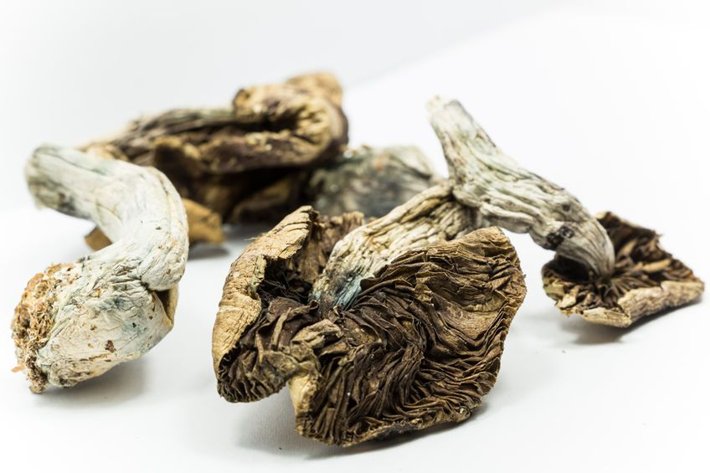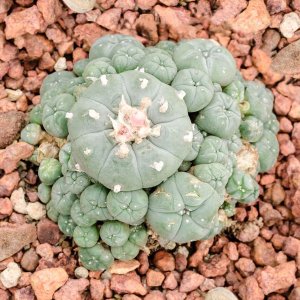Facts About Hallucinogens

Magic Mushrooms
When seeking to understand any particular class of drug, it is important to first be clear on what a drug is: a chemical substance that produces physiological changes in the user. Regardless of the exact reason for why they are taken, drugs cannot actually solve any problems and tend to create new ones in their wake. It is for this reason that all drugs, even medical drugs taken by doctor recommendation, have the potential to be dangerous to the individual. Some, of course, are far more dangerous than others, and hallucinogens are among these.
Hallucinogenic Drugs
Any drug that can alter an individual’s perceptions, thoughts, and feelings fits the hallucinogen definition. Some hallucinogens can be created from plants and mushrooms, while others are entirely synthesized, or man-made. They are incredibly dangerous for the individual because they cause hallucinations that seem incredibly real and can, therefore, cause the individual to act or react accordingly, potentially placing themselves in extremely dangerous situations.
Some of the most common hallucinogenic drugs include:
- Ayahuasca. Also referred to as Hoasca, Aya or Yage, this hallucinogenic drug usually presents as a tea, and is made from various Amazonian plants that contain dimethyltryptamine, or DMT. When ingested, Ayahuasca can produce hallucinogenic effects for up to eight hours.
- Dimethyltryptamine, or DMT. Also made from Amazonian plants, DMT usually presents as a white crystalline powder that is smoked, injected or consumed. When ingested, DMT produces hallucinogenic effects for anywhere from ten minutes to an hour.
- D-lysergic acid diethylamide, or LSD. Also called Acid, Blotter, Dots or Yellow Sunshine, LSD is a highly potent synthetic drug substance. It is made from lysergic acid and usually presents in a clear or white odorless and colorless liquid which is added to tablets, absorbent paper or gelatin squares. When ingested, LSD produces hallucinogenic effects for up to twelve hours.
- Peyote. Also called Buttons, Cactus and Mesc, Peyote is derived from a small cactus that grows in areas of Texas and Mexico, though a synthetic version can also be made. It is often chewed or boiled to be drunk as a tea.
- 4-phosphoryloxy-N, N-dimethyltryptamine, or Psilocybin. Also known as Little Smoke, Magic Mushrooms, Purple Passion and Shrooms and derived from mushrooms that are found in South America, Mexico and the United States, Psilocybin creates hallucinogenic effects for up to six hours.
- Dextromethorphan, or DXM. DXM is a common cough suppressant used in various cold and cough medicines. When taken in high doses, DXM creates hallucinogenic effects, and since it is legally and easily obtained in most pharmacy stores across the country, it can easily be obtained and abused.
- Ketamine. While primarily intended for use as a surgical anesthetic, Ketamine can be abused in order to produce hallucinogenic effects.
- Phencyclidine, or PCP. Also primarily intended for use as a surgical anesthetic, PCP has long been abandoned for this purpose due to its extensive and serious side effects, including hallucinations. PCP is also known as Angel Dust, Hog, Love Boat and Peace Pill, and can present as a tablet, capsule, liquid or white crystal powder.
- Salvia divinorum, or Salvia. Found in an herb plant in southern Mexico as well as Central and South America, Salvia often produces short, but intense and frightening hallucinogenic effects. It is also known as Diviner’s Sage, Maria Pastora, Sally-D and Magic Mint.
Hallucinogenic drugs usually create their effects by interrupting the brain’s ability to communicate within itself and to the spinal cord. They can interrupt the proper functioning of serotonin, which is important in the regulation of the individual’s moods, sensory perception, sleep, hunger, body temperature, sexual behavior, and muscle control. They can also interrupt the proper functioning of glutamate, which is important in the regulation of the individual’s pain perception, environmental responses, emotion, learning, and memory.
Additionally, individuals who use hallucinogenic drugs may experience increased blood pressure, increased respiration, increased body temperature, loss of appetite, dry mouth, difficulty sleeping, uncoordinated movements, excessive sweating, panic, paranoia, psychosis, and flashbacks that make the individual feel as though they have taken the drug again—even if it has been weeks, months or years since their last use.
The solution, of course, is full rehabilitation treatment.


